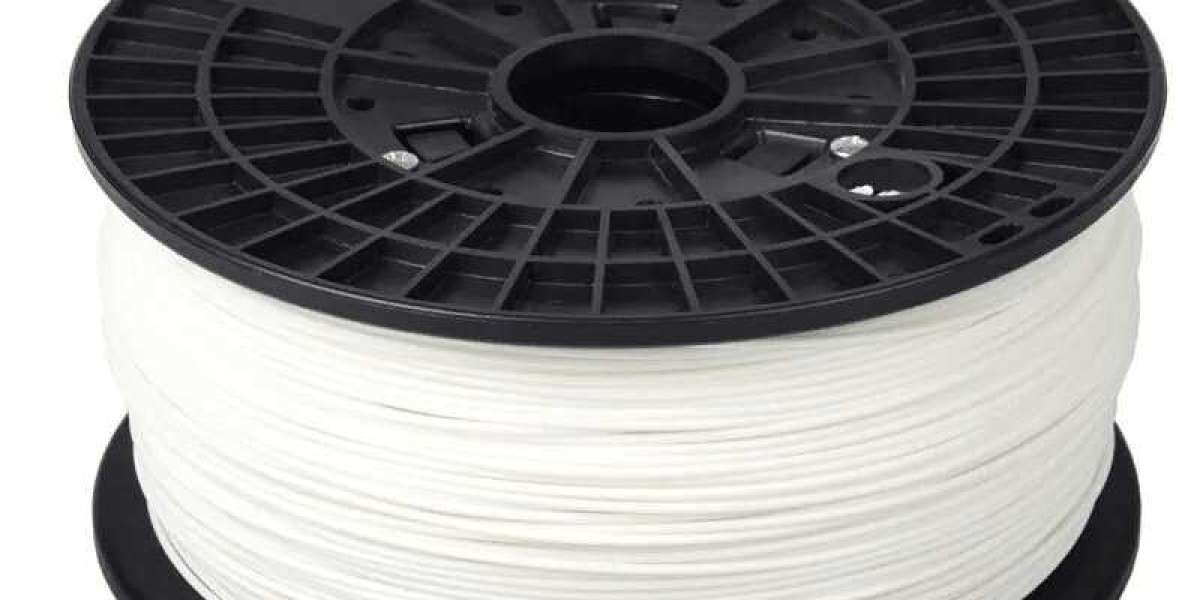With the rapid development of 3D printing technology, bulk filament is one of the important material forms, and the efficiency and reliability of its transmission system plays a decisive role in printing quality and speed. Bulk filaments, usually large diameter filaments, are widely used in industrial-grade 3D printing because of their high cost performance and wide applicability.
Working principle
The bulk filament transmission system in 3D printing is mainly composed of three parts: filament feeding mechanism, heating extrusion mechanism and control system. The filament feed mechanism is responsible for the uniform and continuous transmission of the filament from the plate to the heated extrusion mechanism, which usually includes a motor driven roller and a filament guide tube. The heated extrusion mechanism melts the filament by heating and extrudes it from the nozzle at a certain pressure to form a continuous filament, which is stacked into the desired shape. The control system coordinates the entire transmission process, ensuring that parameters such as filament feed speed, heating temperature and extrusion pressure are precisely controlled to achieve high-quality printing results.
Technical challenge
Despite the relatively simple working principle, bulk filament transmission systems face a number of technical challenges in practical applications:
Transmission stability: the filament is easily affected by friction and gravity during transmission, resulting in uneven filament feeding, affecting printing accuracy and surface quality. Therefore, it is necessary to design an efficient filament feeding mechanism and a filament guide path to reduce the fluctuation of the filament.
Heating uniformity: The temperature control of the heating extrusion mechanism is very important. The high temperature will lead to the decomposition of the filament and affect the property of the material. The temperature is too low to fully melt the filament, resulting in poor extrusion. At present, high precision temperature control system and optimized heating element layout are the key to solve this problem.
Material compatibility: Different materials have different melting points, viscosity and coefficient of thermal expansion, which requires the transmission system to be highly adaptable and able to adjust parameters according to different material characteristics. At present, multi-material compatible transmission system is one of the research hotspots.
High-speed printing: With the continuous expansion of the application field of 3D printing technology, the requirements for printing speed are becoming higher and higher. High-speed printing puts forward higher requirements for the response speed and stability of the transmission system. How to improve the printing speed while ensuring the printing accuracy is a major challenge.
Future development trend
To address the above challenges, the transmission system for bulk filaments in 3D printing is developing in the following directions:
Intelligent control: Through the introduction of advanced sensors and control systems to achieve real-time monitoring and automatic adjustment of the transmission process, improve the stability of the system and printing accuracy. The application of artificial intelligence and machine learning technology will enable the transmission system to have self-learning and adaptive capabilities, and further enhance its intelligence level.
Efficient heating technology: Develop new heating elements and optimize heating structure to achieve fast and uniform heating, shorten printing preparation time and improve printing efficiency. At the same time, reducing energy consumption and heat loss helps to achieve green manufacturing.
Multi-material compatibility: Research and development of a transmission system with a wide range of material compatibility, through modular design and parameter adjustable heating extrusion mechanism, to achieve flexible switching of a variety of materials to meet the manufacturing needs of complex parts.
High-speed printing technology: Optimize the design of filament feeding mechanism and extrusion nozzle, improve the transmission speed and extrusion efficiency of silk. At the same time, combined with advanced motion control algorithm, the high precision control under high-speed printing is realized.
Conclusion
The transmission system of bulk filaments in 3D printing is the key to achieving efficient and high-quality printing. With the continuous progress and innovation of technology, the transmission system will make greater breakthroughs in intelligence, high efficiency, multi-material compatibility and high-speed printing, providing a more solid foundation for the wide application of 3D printing technology. In the future, 3D printing will show its unique advantages in more areas and bring revolutionary changes to the manufacturing industry.






